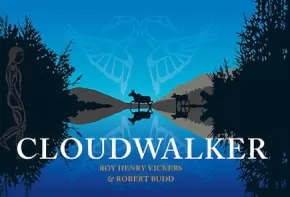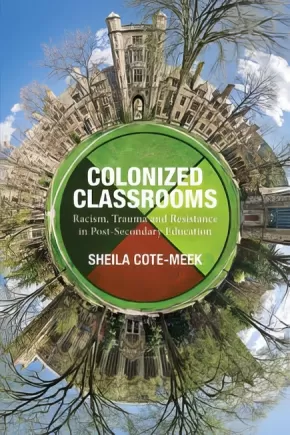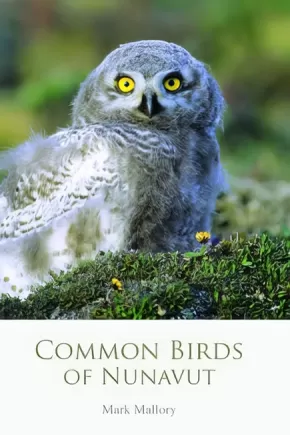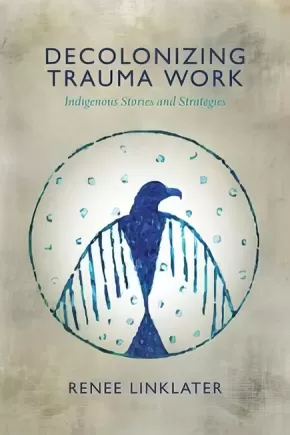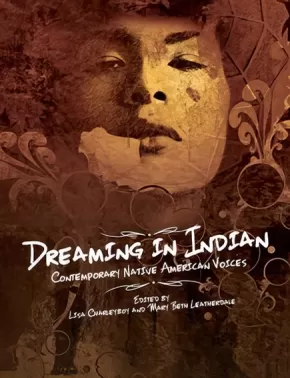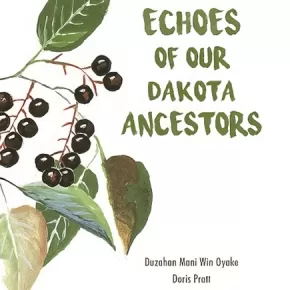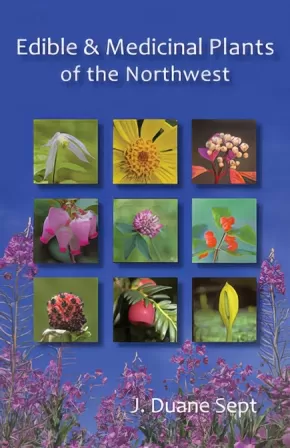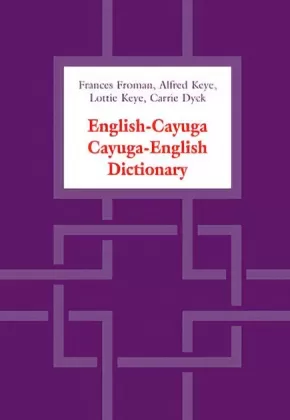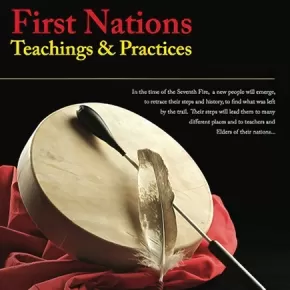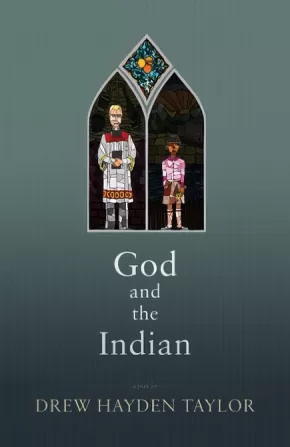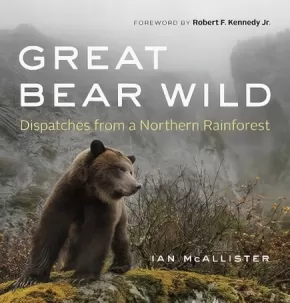
Browse Books for Adults
1531
-
1545
of
1940 Results;
Sort By
Go To
of 130
Cloudwalker
$24.95
Format:
Hardcover
Text Content Territories:
Indigenous Canadian; First Nations; Gitxsan (Gitksan);
ISBN / Barcode: 9781550176193
Synopsis:
Synopsis:
Cloudwalker, describing the creation of the rivers, is the second in a series of Northwest Coast legends by Roy Henry Vickers and Robert Budd. Their previous collaboration, Raven Brings the Light (2013), is a national bestseller.
On British Columbia's northwest coast lies the Sacred Headwaters--the source of three of British Columbia's largest salmon-bearing rivers. These rivers are the source of life for all creatures in the area. But what gave life to the rivers themselves?
Astace, a young Gitxsan hunter, is intent on catching a group of swans with his bare hands. He is carried away by the birds' powerful wings and dropped in the clouds. With only a cedar box of water Astace wanders the clouds, growing weaker, stumbling and spilling the contents. When he finally returns to earth he discovers lakes, creeks, and rivers where there were none before. The Gitxsan rejoice at having him home, and name the new river they live alongside Ksien--"juice from the clouds."
Roy Henry Vickers' vibrant artwork, including 18 new prints, accompany this new retelling of an ancient story--readers of all ages will be captivated.
Educator & Series Information
This book is part of the Northwest Coast Legends series.
Other books in this series include:
Raven Brings the Light
Cloudwalker
Orca Chief
Peace Dancer
Recommended for ages 3 to 6.
Additional Information
40 pages | 12.00" x 8.25"
Colonized Classrooms
$27.00
Format:
Paperback
Text Content Territories:
Indigenous Canadian;
Grade Levels: University/College;
ISBN / Barcode: 9781552666531
Synopsis:
Synopsis:
COLONIZED CLASSROOMS
Racism, Trauma and Resistance in Post-Secondary Education
In Colonized Classrooms, Sheila Cote-Meek discusses how Aboriginal students confront narratives of colonial violence in the post secondary classroom, while they are, at the same time, living and experiencing colonial violence on a daily basis. Basing her analysis on interviews with Aboriginal students, teachers and Elders, Cote-Meek deftly illustrates how colonization and its violence are not a distant experience, but one that is being negotiated every day in universities and colleges across Canada.
Educator Information
Contents: Setting the Context • Conceptualizing the Impact of the Colonial Encounter • Negotiating the Culture/Colonial Divide in the Postsecondary Classroom • Negotiating Race in the Postsecondary Classroom • Trauma in the Classroom • Resisting Ongoing Racism and Colonialism in the Postsecondary Classroom • Closing the Circle: The Possibilities for Transformational Pedagogy • References
Additional Information
198 pages | 6.00" x 9.00" | Paperback
Common Birds of Nunavut (5 in Stock) ON SALE
$15.95 $19.95
Format:
Paperback
Text Content Territories:
Indigenous Canadian; Inuit;
ISBN / Barcode: 9781927095669
Synopsis:
Synopsis:
Explore the fascinating world of Nunavut's diverse bird populations in this richly visual, informative book.
Through beautiful photographs and a broad range of information, readers will learn about the appearances, traditional uses, and behaviours of Arctic birds. With detailed information on more than 50 species, this book provides an in-depth look at Arctic birds.
Far from a barren land of ice and snow, this book will introduce readers to the vibrant natural life of Nunavut through its distinct ornithology.
Educator Information
While mainly a book about birds in Nunavut for young adults (pre-teens or teens) and adults, this resource also contains cultural information about the Inuit, including the Inuit's relationship to Nunavut birds, such as the value and uses of these birds, the Inuktitut names for birds, as well as local ecological knowledge.
This resource is also available in French: Les oiseaux du Nunavut
Additional Information
174 pages | 9.00" x 6.50"
Cree Dictionary and Pocket Phrase Book Set, N Dialect
$19.95
Format:
Paperback
Synopsis:
“A good method of learning the Cree language, with its unique sounds, involves verbal communication between teacher and students.”
This Cree Dictionary and Everyday Phrases & Words book set was written by the last remaining fluent Cree Elders of Ochekiwi Sipi Cree Nation (Fisher River). Some of the Elders have passed on and this set is dedicated to their memory. The dialect is Maskekomowina – Swampy Cree, or N Dialect.
In both books, the English words are translated into Cree using Roman orthography, phonetics, and Cree syllabics. The Dictionary is a 149-page, coil bound publication. The Everyday Phrases & Words is a pocket-sized, 39-page booklet.
Decolonizing Trauma Work: Indigenous Stories and Strategies
$27.00
Format:
Paperback
Text Content Territories:
Indigenous Canadian;
Reading Level: N/A
ISBN / Barcode: 9781552666586
Synopsis:
Synopsis:
In Decolonizing Trauma Work, Renee Linklater explores healing and wellness in Indigenous communities on Turtle Island. Drawing on a decolonizing approach, which puts the “soul wound” of colonialism at the centre, Linklater engages ten Indigenous health care practitioners in a dialogue regarding Indigenous notions of wellness and wholistic health, critiques of psychiatry and psychiatric diagnoses, and Indigenous approaches to helping people through trauma, depression and experiences of parallel and multiple realities. Through stories and strategies that are grounded in Indigenous worldviews and embedded with cultural knowledge, Linklater offers purposeful and practical methods to help individuals and communities that have experienced trauma. Decolonizing Trauma Work, one of the first books of its kind, is a resource for education and training programs, health care practitioners, healing centres, clinical services and policy initiatives.
Additional Information
176 pages | 6.00" x 9.00" | Paperback
Dreaming in Indian: Contemporary Native American Voices
$19.95
Artists:
Editors:
Format:
Hardcover
Text Content Territories:
Indigenous American; Indigenous Canadian;
ISBN / Barcode: 9781554516872
Synopsis:
Synopsis:
A powerful and visually stunning anthology from some of the most groundbreaking Native artists working in North America today.
Truly universal in its themes, Dreaming In Indian will shatter commonly held stereotypes and challenge readers to rethink their own place in the world. Divided into four sections, ‘Roots,’ ‘Battles,’ ‘Medicines,’ and ‘Dreamcatchers,’ this book offers readers a unique insight into a community often misunderstood and misrepresented by the mainstream media.
Emerging and established Native artists, including acclaimed author Joseph Boyden, renowned visual artist Bunky Echo Hawk, and stand-up comedian Ryan McMahon, contribute thoughtful and heartfelt pieces on their experiences growing up Indigenous, expressing them through such mediums as art, food, the written word, sport, dance, and fashion. Renowned chef Aaron Bear Robe, for example, explains how he introduces restaurant customers to his culture by reinventing traditional dishes. And in a dramatic photo spread, model Ashley Callingbull and photographer Thosh Collins reappropriate the trend of wearing ‘Native’ clothing.
Whether addressing the effects of residential schools, calling out bullies through personal manifestos, or simply citing hopes for the future, Dreaming In Indian refuses to shy away from difficult topics. Insightful, thought-provoking, and beautifully honest, this book will to appeal to young adult readers. An innovative and captivating design enhances each contribution and makes for a truly unique reading experience.
Reviews
“It’s hard to imagine a middle- or high-school classroom that wouldn’t benefit from having this.” —Booklist, 02/15
“Belongs in every middle school, high school and public library.” —CM Reviews, 05/22/15
"For some time now, I've been waiting for Dreaming in Indian: Contemporary Native American Voices... It was getting buzz in Native networks on social media. I've read it, now, and highly recommend it... Dreaming in Indian has a vibrancy I've not seen in anything else. A vibrancy that, perhaps, is characteristic of a generation at ease with technology and its tools... I want to pore over the art, studying it, thinking about it, marveling at it. I can imagine a lot of people dismissing this work because it doesn't conform to their stereotypical ideas of dead or stoic Indians. But I can also imagine a lot of others holding it dear because it reflects who we are... You'll also have a solid introduction to the artists and writers, their lives, what drives them... Gritty and real, their live stories are inspiring... There's a lot to ponder in Dreaming In Indian. It'll challenge readers, in good ways, and that is a good thing. Check it out." — Debbie Reese, American Indians in Children's Literature, September 2014
Educator Information
Recommended Ages: 11-18
Themes: First Nations; native peoples; Indigenous; biography; multicultural; stereotyping; acceptance; community; prejudice; self-esteem; tolerance.
Fountas & Pinnell Reading Level: Z+
Authentic First Peoples resource K-9.
Recommended English First Peoples resource.
Additional Information
128 pages | 8.50" x 11.00" | full-color illustrations and photographs throughout, foreword, introduction
Echoes of Our Dakota Ancestors
$9.95
Format:
Paperback
Text Content Territories:
Indigenous Canadian; First Nations; Sioux; Dakota;
Grade Levels: University/College;
ISBN / Barcode: 9781927849156
Synopsis:
Synopsis:
Enjoy imakhmakhap woyakapi (enjoyments that are told) in Dakota. Each chapter in this charmingly illustrated booklet focuses on a month of the year, with stories, poems and songs in the Dakota language. Doris Pratt, a long time language teacher and material developer, shares this Dakota collection to help students learn and practice the language.
Educator Information
This book is written in the Dakota language. It is useful as a total Dakota language program or can be used to supplement any Dakota language course. It is suitable for adult language courses. Included in the appendices are explanations of the Dakota language and a prayer by Hector Bunn.
Edible & Medicinal Plants of the Northwest
$14.95
Format:
Paperback
Text Content Territories:
Indigenous;
ISBN / Barcode: 9780973981988
Synopsis:
Synopsis:
The edible and medicinal wild plants of the Northwest have a long history of traditional use, with some remarkable success stories. Hundreds or perhaps thousands of years’ experience with the nourishing and healing properties of indigenous plants have been passed down through generations of Native peoples. Today, some deadly diseases such as breast and ovarian cancers are treated with extracts from native plants. Many roots, flowers, leaves and stems can be eaten raw or cooked, and some plants can even be made into beer. A surprising number of common local plants make tasty, nutritious treats or relieve health troubles. Meet 66 of them in this amazing new book!
Chapters include information on trees, shrubs, wildflowers, aquatic plants, horsetails, ferns and poisonous plants with lists of therapeutic plant uses and a medicinal glossary.
End-of-Earth People: The Arctic Sahtu Dene
$35.00
Format:
Paperback
Text Content Territories:
Indigenous Canadian; First Nations; Dene; North Slavey (Sahtu);
ISBN / Barcode: 9781459722675
Synopsis:
Synopsis:
Bern Will Brown, noted northern author, artist, photographer, and respected community leader living in Colville Lake, Northwest Territories, provides new insights and perspectives on the Sahtu Dene, the people referred to as the "Hareskin" in Alexander Mackenzie's 1793 journal. Having lived among them for over sixty years and as a speaker of their dialect, Brown is well positioned to provide an adventure in history and culture rooted in the Hareskin traditional way of life.
End-of-Earth People, his latest contribution and a valuable record of the North, is a portrait of a people Brown has come to know in ways that anthropologists and ethnologists can only envy.
English-Cayuga/Cayuga-English Dictionary
$81.00
Format:
Paperback
Text Content Territories:
Indigenous Canadian; First Nations; Haudenosaunee (Iroquois); Cayuga;
Reading Level: N/A
ISBN / Barcode: 9781442627093
Synopsis:
Synopsis:
The first comprehensive lexicographic work on Cayuga, an Iroquoian language spoken in southern Ontario at Six Nations of the Grand River, this dictionary, combines the work of Dyck, a professor of linguistics, and Froman, Keye, and Keye, all Cayuga language teachers at Six Nations. It contains over 3000 entries, including 1000 verb forms and many nouns never before printed; extensive cross-referencing, thematic appendices that highlight cultural references and provide 1600 further entries, and a short grammatical sketch complete this accomplished work.
Entries in the main dictionary are organized by bases, which will make the dictionary especially helpful to those learning Cayuga as a second language. The dictionary's accuracy and extensiveness will make it an indispensable reference not only to the Cayuga speaker and student, but also to other Iroquoian speakers, linguists, anthropologists, and historians of Indigenous Peoples.
Produced under the auspices of the Sweetgrass First Nations Language Council Inc.
Reviews
"The first extensive dictionary of Cayuga, this benchmark work documents the language in 3,000 entries and in word lists organized thematically in appendixes ... A valuable tool for linguists of Iroquoian languages and anthropologists, as well as those who study the Cayuga language. Summing up: Highly recommended."— R. Hanson, Choice
"A major milestone in Iroquoian studies and an extremely important tool in the preservation of the Cayuga language."— Blair A. Rudes, Department of English, University of North Carolina at Charlotte
Additional Information
786 pages | 6.88" x 9.73" | Paperback
First Nations of British Columbia: An Anthropological Overview, Third Edition
$29.95
Format:
Paperback
Text Content Territories:
Indigenous Canadian; First Nations;
ISBN / Barcode: 9780774828734
Synopsis:
Synopsis:
The First Nations of British Columbia, now in its third edition, is a concise and accessible overview of BC's First Nations peoples, cultures, and issues. Robert J. Muckle familiarizes readers with the history, diversity, and complexity of First Nations to provide a context for contemporary concerns and initiatives. This latest edition of the classic work has been fully revised, with new chapters added and previous ones rewritten, arguments reframed in light of current developments, and resources brought right up to date. The First Nations of British Columbia is an indispensable resource for teachers and students and an excellent introduction for anyone interested in BC First Nations.
First Nations Teaching & Practices (6 in Stock)
$8.00
Format:
Paperback
Text Content Territories:
Indigenous Canadian; First Nations;
Grade Levels: University/College;
Synopsis:
This booklet is intended to provide readers with a basic understanding of the traditional teachings and practices of Manitoba’s First Nations people. While this knowledge has always existed, it has become increasingly important to seek it, learn it and share it, in particular with children and youth. As our knowledge increases, so does the practice, honour and respect we have for one another and for these ancestral ways.
The tools and knowledge in this booklet provide the basic information needed to begin a journey in order to rediscover the original ways that have withstood the test of time. We have searched for this knowledge by going to our Elders who carry the gifts of culture, language, history, medicines and ceremonies.
From the Poplars
$16.95
Format:
Paperback
Text Content Territories:
Indigenous Canadian; First Nations; Salish; Coast Salish; Qayqayt;
ISBN / Barcode: 9780889228566
Synopsis:
Synopsis:
In the North Arm of British Columbia’s Fraser River lies an uninhabited island. In the midst of major industry and shipping, it is central to the waterfront of British Columbia’s original capital of New Westminster passed by daily by thousands of SkyTrain commuters. Poplar Island is lush and unspoken, but storied. It is the traditional territory of the Qayqayt First Nation. Made into property, a parcel of land belonging to the “New Westminster and Brownsville Indians,” this is the location of one of British Columbia’s first “Indian Reserves.”
This is also a place where Indigenous smallpox victims from the south coast were forced into quarantine, substandard care and buried. As people were decimated the land was taken and exchanged between levels of government. The trees were clear-cut for industry, beginning with shipbuilding during the First World War. The island still serves as booming anchorage for local sawmills.
From the Poplars is the poetic outcome of archival research, and of listening to the land and the stories of a place. It is a meditation on an unmarked, twenty-seven and a half acres of land held as government property: a monument to colonial plunder on the waterfront of a city, like many cities, built upon erasures. From an emplaced poet and resident of New Westminster, this text contributes to present narratives on decolonization. It is an honouring of river and riparian density, and a witness to resilience, tempering a silence that inevitably will be heard.
God and the Indian
$17.95
Format:
Paperback
Text Content Territories:
Indigenous Canadian; First Nations; Cree (Nehiyawak);
ISBN / Barcode: 9780889228443
Synopsis:
Synopsis:
While panhandling outside a coffee shop, Johnny, a Cree woman who lives on the streets, is shocked to recognize a face from her childhood, which was spent in a residential school. Desperate to hear the man acknowledge the terrible abuse he inflicted on her and other children at the school, Johnny follows Anglican bishop George King to his office to confront him.
Inside King’s office, Johnny’s memories are fluid, shifting, and her voice cracks with raw emotion. Is the bishop actually guilty of what she claims, or has her ability to recollect been altered by poverty, abuse, and starvation experienced on the streets? Can her memories be trusted? Who is responsible for what?
At its core, God and the Indian, by celebrated Aboriginal playwright Drew Hayden Taylor, explores the complex process of healing through dialogue. Loosely based on Death and the Maiden by Chilean playwright Ariel Dorfman, the play identifies the ambiguities that frame past traumatic events. Against the backdrop of Canada’s Truth and Reconciliation Commission, which has facilitated the recent outpouring of stories from residential school survivors across the country, the play explores what is possible when the abused meets the abuser and is given a free forum for expression.
Great Bear Wild: Dispatches from a Northern Rainforest
$29.95
Format:
Hardcover
Text Content Territories:
Indigenous Canadian; First Nations; Heiltsuk (Bella Bella); Tsimshian (Ts'msysen); Gitga'at (Gitga'ata);
ISBN / Barcode: 9781771640459
Synopsis:
Synopsis:
Ian McAllister, conservationist, photographer, and longtime Great Bear Rainforest resident, takes us on a deeply personal journey from the headwaters of the region’s unexplored river valleys down to the hidden depths of the offshore world. Globally renowned for its astonishing biodiversity, the Great Bear Rainforest is also one of the most endangered landscapes on the planet, where First Nations people fight for their way of life as massive energy projects threaten entire ecosystems.
In a not-so unusual day, McAllister quietly observes 27 bears fishing for salmon, three of which are the famed pure white spirit bear. This stunning collection of photographs and personal narrative is the product of twenty-five years of McAllister’s research, exploration, and campaigning for the spectacular area he calls home.
Sort By
Go To
of 130

